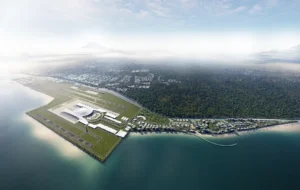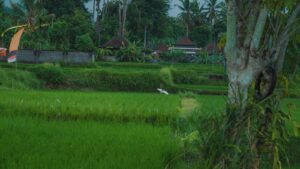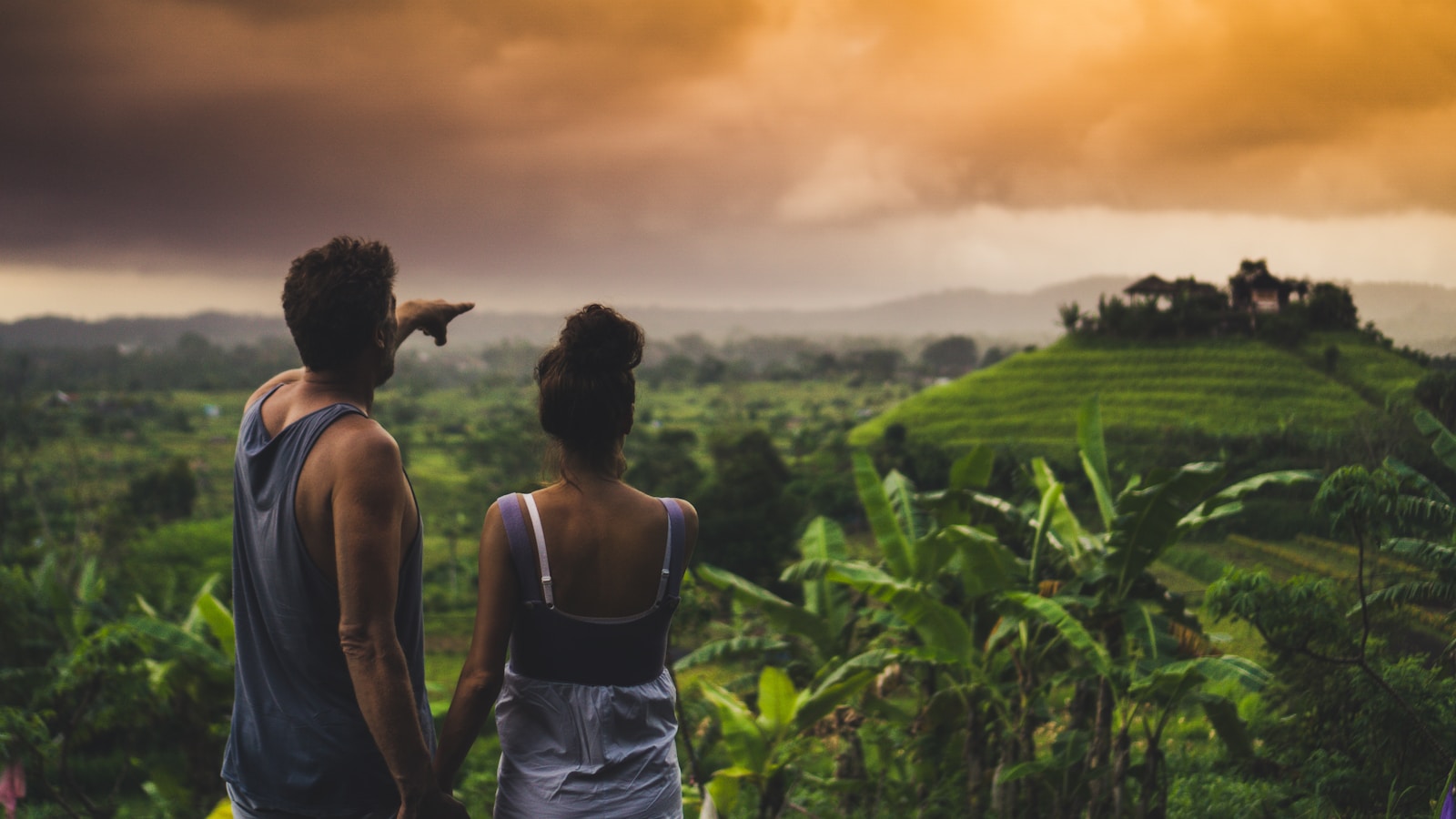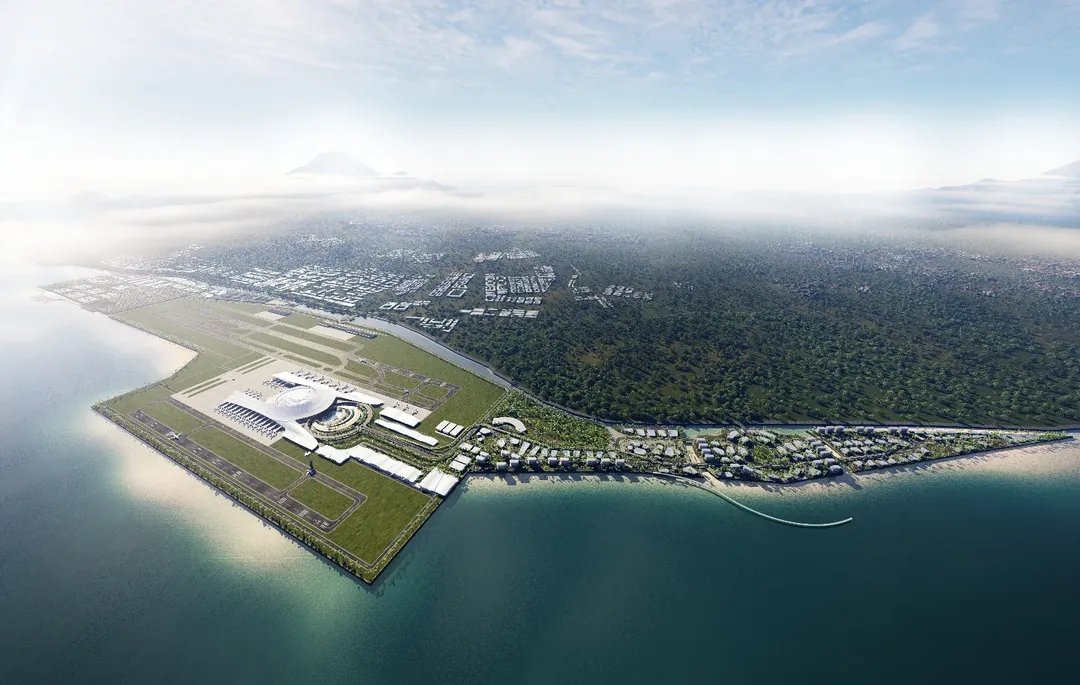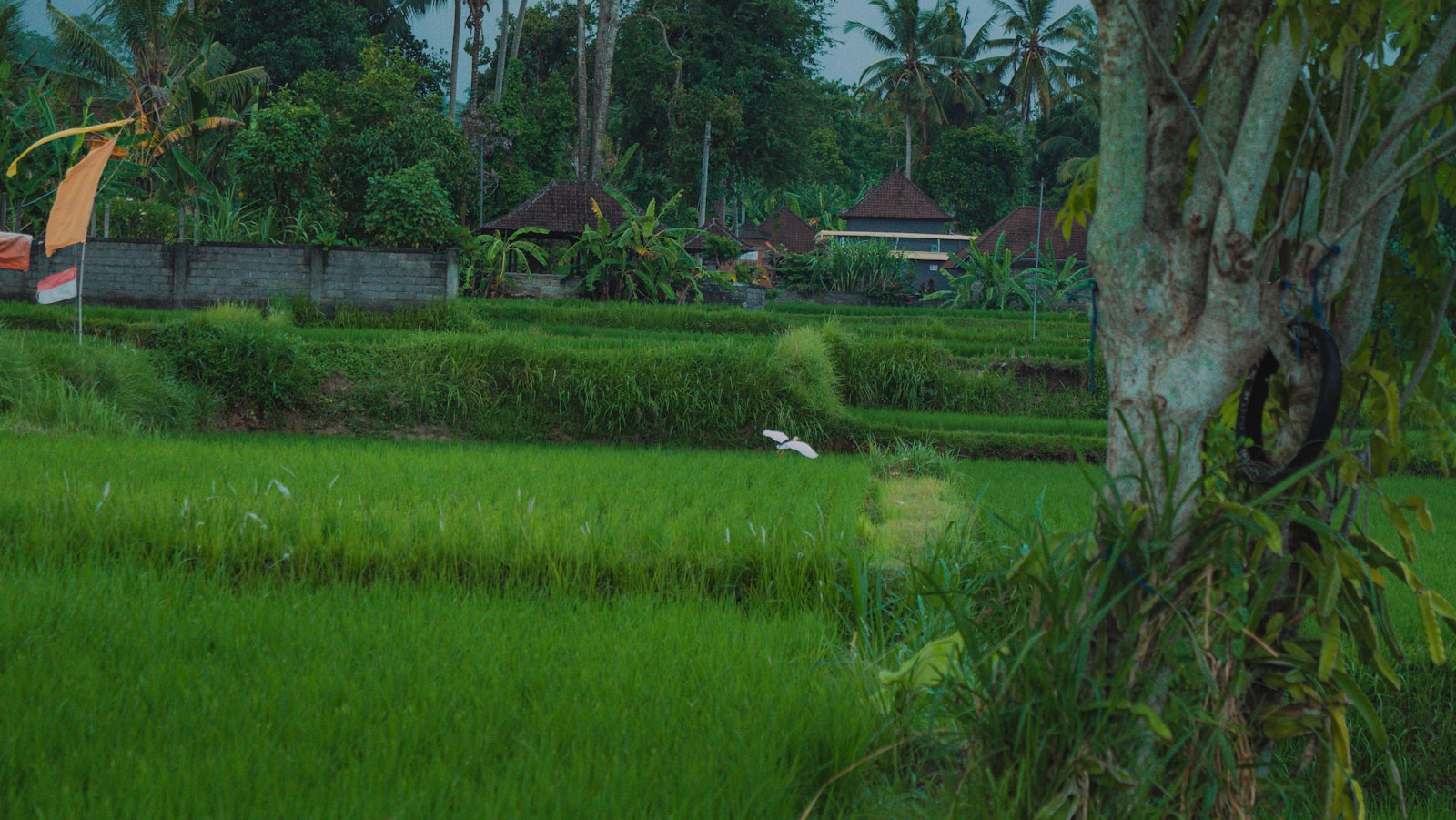Healthy Lifestyles & Community Vibes in Bali’s Seseh: Why Tourists and Digital Nomads Are Flocking Here
Seseh, once a quiet farming and fishing village on Bali’s southern coast, is quietly transforming into a thriving wellness and nomad enclave. With sunrise yoga by the sea, nourishing cafés, community runs, and wellness hubs just around the corner, it offers a rare fusion of connection, calm and creative energy. In this article we explore why visitors and digital nomads are swapping busier hubs like Canggu for Seseh’s slower pace, what makes the lifestyle here so magnetic, and how this village might just become a blueprint for sustainable, community-centred tourism in Bali’s future.

Seseh, Bali, is no longer just a quiet coastal village tucked behind Canggu — it’s rapidly becoming a magnet for travellers, health-focused visitors and remote workers seeking that perfect blend of serenity, connection and wellness. Think sunrise yoga by the sea, strong community rituals, nourishing café menus, and nature on tap. In this article we’ll dive deep into why Seseh is emerging as a hotspot for healthy living and community vibes, what’s fueling the movement, and how this coastal village is carving out its own niche in Bali’s tourism and nomad scene — with a fresh take on sustainability, creativity, and local authenticity.
Why Seseh Is Having a Moment (And Why That Matters)
Until recently, Seseh was a traditional fishing and farming hamlet on Bali’s Badung regency coastline. But now it’s being quietly rediscovered. Unlike the more saturated hubs of Canggu and Ubud, Seseh offers a gentler pace, fewer crowds, and a more grounded connection to Bali’s rhythms. So what’s changed?
- Its location is a sweet spot: close enough to Canggu’s amenities, yet far enough to escape its bustle.
- Wellness operators, yoga retreats and spa sanctuaries sprouting nearby (especially around the fringe) bring in new energy.
- A surge of cafés, coffee shops and health-driven restaurants makes healthy choices easy for visitors.
- Community events — like group runs, shared meals, local markets — help new arrivals connect quickly.
- It retains strong cultural and natural character: black sand beach, rice paddies, temple edges, and locals going about daily life.
In short, Seseh is shaping itself as the kind of place where you don’t just visit — you settle in, at least for a while, and breathe into a slower, more intentional pace.
From Beaches to Beans: Wellness Meets Rural Charm
Let’s paint a picture. Early in the morning, when the sky’s still soft and the sea muted, you’ll see locals heading to the fields, fishermen hauling their catch, and a handful of health-minded visitors slipping into yoga or setting off on a run. By midmorning, cafés hum with the clink of mugs, laptops open, and friendly hellos exchanged over smoothie bowls. In the afternoon, there may be a workshop on breathwork, a dip in a cold plunge, or a walk through rice paddies. Evening brings sunset silhouettes, gentle ocean breezes, and perhaps a community dinner or live acoustics by candlelight. That’s Seseh’s emerging rhythm.
Wellness hubs just nearby amplify the appeal. For instance, Udara Bali, just a short drive from Seseh, offers yoga, detox, spa, cold plunge, sauna and holistic programmes. Its offerings include over ten daily classes across yoga styles (Vinyasa, Hatha, Yin, Pilates, Qi Gong) and regular sound healing, cacao ceremonies, breathwork and retreats. For those wanting to immerse fully, this kind of infrastructure supplements what Seseh itself can support.
Meanwhile, the beach at Seseh is dramatic and quieter than its flashier neighbours. Black sand, sweeping horizons, and moody waves make it a contemplative space — perfect for reflecting, journaling, walking or simply pausing. Photographers will love the tide pools and temple silhouettes at low tide. Off the beach, rice fields and rural lanes invite gentle exploration, revealing temples, local village life, and stretches of green untouched by mass tourism.
The cafés in Seseh lean into this wellness ethos. One such place is Seseh St Café, blending Western breakfasts and Asian influences, where dishes are crafted with quality, nutrition, and aesthetic in mind (pan-seared fish, vibrant salads, avocado tarts, wholesome pastas). (From original source.) The result? Even “cheat meals” are conceived with balance.
And beyond cafés, there’s a growing footprint of healthy supermarkets, eco-pantries and local grocers offering organic produce and sustainable goods. (Seen via Instagram reels showing fresh vegetables, plastic-free options, dry goods)
The Digital Nomad Factor: Why They’re Choosing Seseh
Digital nomads are part of Seseh’s transformation. As remote work becomes more viable and lifestyle priorities shift, many are choosing calmer places over crowded hotspots. Bali already draws nomads in droves — Canggu and Ubud have long been considered top picks. But Seseh is emerging as a hidden gem for those who want the benefits of Bali without some of the compromises.
Here’s what’s drawing them:
- Cost efficiency: Some reports suggest Seseh’s cost of living for a nomad is lower than in Canggu or Ubud (e.g. Nomad List listing Seseh at ~ USD 500+).
- Better mental space: Less noise, less traffic, more breathing room.
- Balance of connectivity and quiet: While some cafés and co-working spaces with good WiFi exist in Seseh, it’s still under-served, giving early adopters a chance to define community norms. (Nomadwise currently lists limited or no coworking spaces in Seseh)
- Community rituals: Runs, meetups, collective meals, and wellness workshops help forge social ties fast.
- Nature as coworking: Fields, beaches, garden cafés become backdrop for inspiration, breaks, and recharging.
- Proximity: Being near Canggu means access to infrastructure, shopping, healthcare and social scenes without living in the middle of them.
One neighbourhood café, FLOWERBOY, is already hosting community runs — a 5 km and 10 km loop through rice paddies and village lanes, followed by coffee and hangouts. (Mentioned in original source.) That’s the kind of local ritual that helps newcomers feel anchored.
In short: Seseh offers a kind of creative margin many nomads crave — enough comfort to work, enough calm to reflect, and enough community to belong.
The Sustainability & Authenticity Angle
What excites me most is how Seseh is positioned to do this transformation with respect — not as a sanitised “wellness resort village” but as community-forward, culture-aware, nature-honouring place. That’s the additional angle I want to emphasise.
In Bali’s more touristic zones, we’ve seen the downsides: overdevelopment, cultural erosion, environmental strain, crowding, water stress. But in Seseh there’s an opportunity to model a different path — one rooted in locals, ecology, and mindful growth.
Here’s how Seseh (or those who care about Seseh) can lean into that:
- Eco-sensitive building and design: Using bamboo, local stone, green roofs, low-impact construction. Let new cafés, studios and villas follow regenerative design principles, not just fancy façades.
- Water and resource mindfulness: In Bali, water tables are under strain (Canggu’s water issues are well documented). Seseh developers and locals need to prioritise rainwater harvesting, greywater systems, and responsible sourcing.
- Support local agriculture and food systems: Grow more organic produce nearby, reduce reliance on imported goods, tie cafés and restaurants to local farms.
- Cultural engagement and reciprocity: Rather than displacing or overshadowing villages, projects should integrate local design, philanthropic initiatives, community partnerships, local arts, and cultural rituals.
- Low-impact mobility: Encourage bike lanes, walking, paths through paddies — not just more scooter traffic.
- Conscious tourism: Encourage slower stays (week, month residencies) over day trippers, so people invest locally, not just consume.
If Seseh can grow smart, it might become a model for the next wave of “regenerative tourism” in Bali, rather than just another boutique wellness enclave.
What to Do, Where to Eat, How to Plug In
Here are some of the practical highlights that make a stay in Seseh compelling.
Places & Infrastructure
- Udara Bali: Wellness centre offering yoga, detox, spa, thermal experiences.
- Cafés & Co-working: Local cafés like Seseh St and others serve healthy menus. New cafés in Seseh are also listed in Nomadwise (with WiFi speed ratings and comfort factors).
- Beach & nature: Seseh beach offers quiet walks, surf views (though not always safe for swimming depending on tides), dramatic tides and photo ops.
- Exploring rice paddies & villages: Walk or scooter through lanes, temple edges, and fields.
- Hidden gem feel: Seseh is increasingly presented as one of Bali’s lesser known yet “authentic” escapes.
Food & Drink Highlights
- Farm-to-table cafés: Places are putting nutrition front and centre — fresh vegetables, balanced dishes, fusion plates with local produce. (Original source and local reports.)
- Local warungs & traditional food: Don’t miss the local flavour — nasi campur, grilled fish, sambal matah — in small family-run warungs in village lanes.
- Healthy supermarkets & eco pantries: Some local sellers carry organic produce, plastic-free goods, dry goods with zero waste sensibility. (Seen via social media)
Community & Events
- Group runs & walking rituals: As noted, FLOWERBOY runs through local lanes and fields are becoming regular community touches. (Original source.)
- Yoga, breathwork, retreats: Udara and local studios host daily classes, workshops, sound healings, cacao ceremonies.
- Markets & village life integration: Occasional village markets, cultural ceremonies, temple festivals make being a guest also being a participant.
Challenges, Trade-offs & A Word of Caution
It’s not all smooth sailing. Here are some challenges Seseh must navigate:
- Connectivity limits: While many cafés offer good WiFi, infrastructure is still catching up. For heavy video work, reliability might fluctuate. (Nomadwise lists limited co-working infrastructure)
- Scale pressure: As popularity grows, there’s a risk of commercialization, loss of local character, inflated land prices, and gentrification.
- Environmental fragility: Coastal erosion, water table stress, waste management — all need careful guardrails.
- Cultural balance: Ensuring locals are part of decisions and benefits, not sidelined as tourism grows.
- Transport & access: The roads, paths, public services might not yet support heavy influx.
- Safety and governance: For digital nomads, visa rules, local regulation, health access, emergencies must be clear and reliable.
Growth will have to be balanced, but if Seseh leans into its identity — slow, community, nature-oriented — it has a chance to avoid the worst pitfalls.
A Holistic Vision: Seseh as a Model for Next-Generation Wellness Communities
What I love most about this story is the possibility of Seseh becoming more than just a travel trend. It could become a blueprint for how small rural places can reinvent themselves — not by copying global models, but by evolving based on their strengths: community, nature, simplicity, slower rhythms.
Imagine this:
- A guest house perched among paddy terraces, built from local bamboo and stone.
- A café sourcing ingredients from neighbouring farms, composting scraps, reducing single-use plastics.
- A co-working hut under coconut palms, powered partly by solar, with fair pricing and community events built in.
- A walking path from village to beach to temple, lined with native plants and shaded spots.
- Locals and visitors mingling naturally at weekly meals or ceremonies — not segregated, but intertwined.
- Retreats or programmes that aren’t isolated “bubbles,” but integrate with the village, giving back in meaningful ways.
That’s the direction I hope Seseh leans.
Final Thoughts
Seseh is more than a new Bali fad. It’s a space where healthy living, community, creativity and nature converge with opportunity. For tourists craving more than beautiful beaches — for nomads who want roots, rituals, and room to breathe — for locals and visitors alike who prefer connection over consumption — Seseh offers a glimpse of what regenerative, authentic, balanced life could look like.
Whether you’re planning a visit, considering an extended stay, or imagining something new for Bali’s future, Seseh invites you to slow down, join the rhythm, and help this village grow mindfully.
Let Seseh remind us that sometimes, stepping back from the bright lights reveals the most luminous places.



